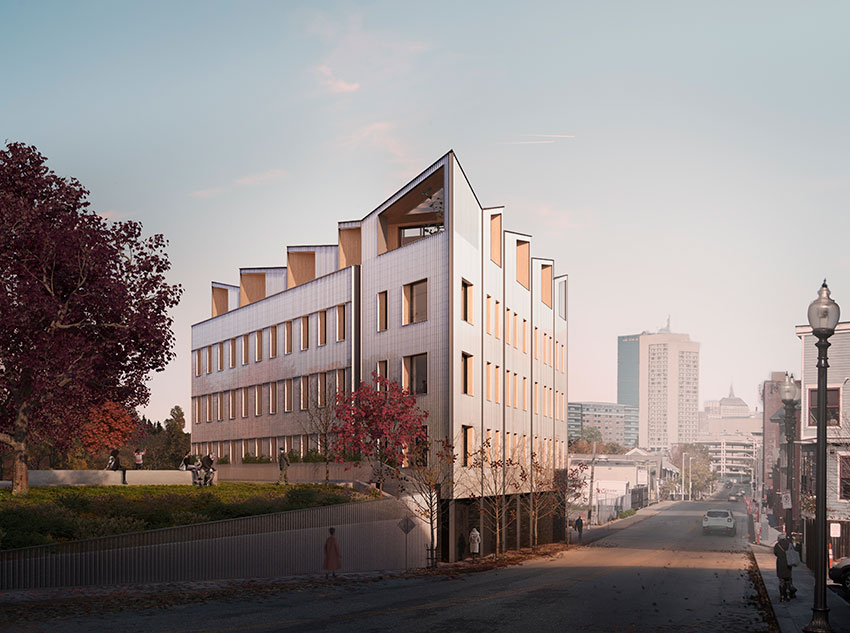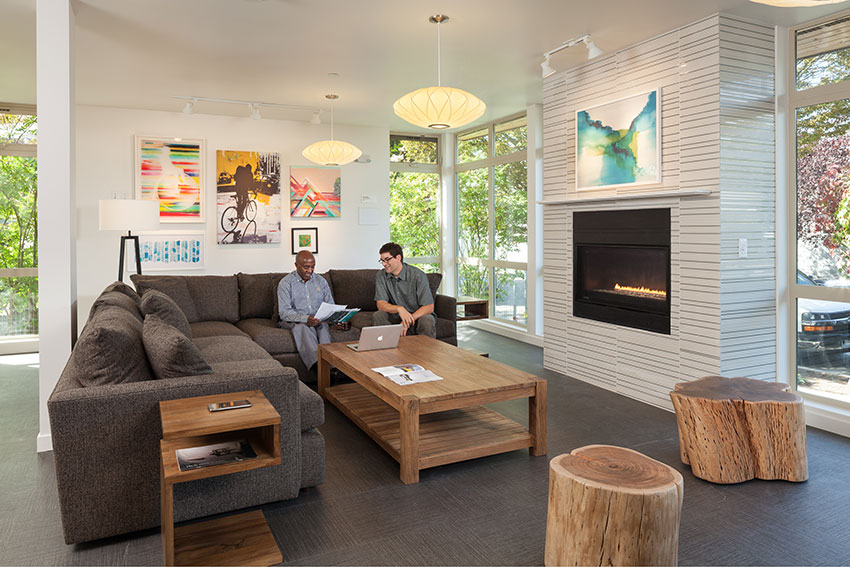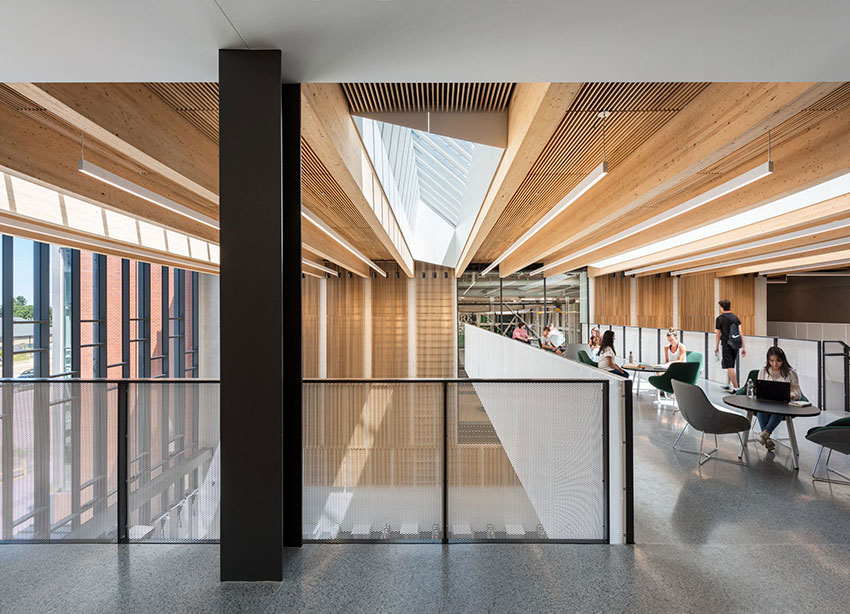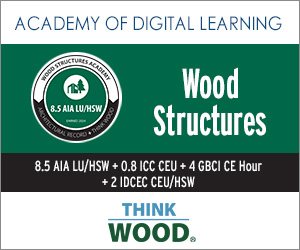Architecting Change
 1 AIA LU/HSW; 1 GBCI CE Hour; 0.1 ICC CEU; 0.1 IACET CEU*; 1 AIBD P-CE; AAA 1 Structured Learning Hour; This course can be self-reported to the AANB, as per their CE Guidelines; AAPEI 1 Structured Learning Hour; This course can be self-reported to the AIBC, as per their CE Guidelines.; MAA 1 Structured Learning Hour; This course can be self-reported to the NLAA.; This course can be self-reported to the NSAA; NWTAA 1 Structured Learning Hour; OAA 1 Learning Hour; SAA 1 Hour of Core Learning
1 AIA LU/HSW; 1 GBCI CE Hour; 0.1 ICC CEU; 0.1 IACET CEU*; 1 AIBD P-CE; AAA 1 Structured Learning Hour; This course can be self-reported to the AANB, as per their CE Guidelines; AAPEI 1 Structured Learning Hour; This course can be self-reported to the AIBC, as per their CE Guidelines.; MAA 1 Structured Learning Hour; This course can be self-reported to the NLAA.; This course can be self-reported to the NSAA; NWTAA 1 Structured Learning Hour; OAA 1 Learning Hour; SAA 1 Hour of Core Learning
Learning Objectives:
- Assess and describe current and emerging social, economic and technological trends impacting the built environment, urbanism and the business of architecture.
- Explain how community-centered participatory design and the strategic use of greenspaces in urban environments can benefit the health of individuals, communities and cities.
- Define the built environment’s significant contribution to carbon emissions, and learn how designers are using lifecycle analysis to measure a building material’s impact on the carbon footprint of a project.
- Identify key factors contributing to the cost of mixed-use and multi-family developments, along with planning and design strategies that can help make these projects more affordable.
This course is part of the Wood Structures Academy
Mass Appeal: CLT Passive House Demonstration Project
A Boston-based CLT Passive House Demonstration Project is a mass timber, mid-rise, multifamily, certified Passive House building that shows how cross-laminated timber systems can meet complex design and sustainability goals. It’s the brainchild of MIT start-up Generate and design-build firm Placetailor.

Photo courtesy of Generate, Placetailor
Model-C
“Mass timber buildings, like Model-C, have the ability to tackle climate change [and] are also mid-rise to accommodate urban density,” says Generate CEO, John Klein.
The five-story, mixed-use demonstration project is Boston’s first full cross-laminated timber (CLT) building, housing 14 residential units and a ground floor coworking space. The project was designed to operate at net-zero carbon, which is achieved by calculating both the building’s embodied energy and its operational energy, and offsetting any annual excess energy use through carbon offset purchases. The building is Passive House-certified and meets the Boston Department of Neighborhood Development’s Zero Emission Standards.
High-Density, Mid-Rise, Light-Frame Construction: Yobi Microhousing
Today’s wood-frame buildings can offer more affordable housing options. Four-to-six-story wood-frame structures are a sweet spot for urban infill and neighborhood densification—helping to pencil out housing in bigger cities with rising costs. An excellent example is Seattle-based Yobi Microhousing.

Photo courtesy of © 2015 William P. Wright
Yobi Microhousing
A central strategy in the Yobi project is the creation of shared common space that contributes to an efficient building footprint. Conventional wood-frame construction with dimensional lumber shear walls combined with high insulation levels and sealed openings to create a high performance exterior envelope for the project with energy use that is 40 percent lower than current energy code requirements.
The 13,689-square-foot, four-story structure accommodates 40 sleeping units built over a partially-below-grade basement. A ground floor provides common areas including a lounge, community kitchen, laundry area, and media room.
“Wood makes it much easier to build an efficient envelope,” says David Neiman, a principal architect for the project. Based on energy use per person, Yobi is 70 percent more energy efficient than conventional housing, according to Neiman.
Climate-Friendly Educational Design
Offering lessons in sustainability, more and more of today’s education design—from elementary to post-secondary—showcases climate-smart, low-carbon strategies.
At Billerica Memorial High School, timber contributes to the building’s carbon-conscious design. Embodied carbon in the Forest Stewardship Council-certified spruce timber structure offsets the equivalent of a typical school bus traveling over 460,000 miles.
The 30,000-square-foot Billerica, Massachusetts-based facility, designed by Perkins&Will, elegantly combines wood, steel, and glass, to give a modernist nod to its neighboring neoclassical civic buildings, while delivering a high-tech, future-ready educational environment.
T3: Low-Carbon Commercial Construction
Standing seven stories tall, T3 (Timber, Transit, Technology) was the first commercial property in the U.S. to use timber for its structure and interior finishing. It demonstrates how large timber projects can lower the carbon footprint of the built environment while providing a warm and innovative commercial space. The 220,000-square-foot building was constructed with 8-by-20-foot panels of wood that were stacked across beams of glued, laminated timber. The panels themselves were constructed using dimensional lumber.
Approximately 2.2 million board feet were used in the structure, which will sequester about 700 tons of carbon for the life of the building. It was also built in significantly less time than conventional steel-framed or concrete buildings, completed in just two and a half months at an average of nine days per floor.
Given timber’s light weight, lower production time, and lower costs, T3 developer Hines has replicated this building prototype in Atlanta, with plans to expand to other markets including Chicago, Denver, Toronto, and Melbourne.
Architecting Change: Reasons For Optimism
As design professionals look to the decade ahead, there are many challenges on the horizon, from addressing pressing environmental and social issues to accommodating rapid population growth and shifting market demands. There is a growing understanding that the built environment is inextricably linked to many of the complex issues of our day. While these problems are global in scale and, in some cases, beyond the influence of the AEC industry alone, there are actions design professionals are taking in their day-to-day practice that can begin to make an impact.
A rapidly evolving, post-pandemic world demands adaptive and versatile design professionals who are continually evolving their practice and looking to the latest research and methodologies to help inform their design solutions. Design teams are showing how we can boost health, affordability, and wellness in today’s increasingly dense urban environments through creative, nimble, and flexible thinking.

Photo courtesy of Chuck Choi, Perkins&Will
Billerica Memorial High School
There is also an urgent need to combat climate change and find advanced ways to store carbon in our buildings. Industry leaders are stepping up with substantial commitments—from conducting leading research on carbon and climate to erecting important demonstration projects. Structural timber is proving to be one significant way to sequester embodied carbon and reduce the environmental footprint of new construction. Ingenuity and smart design can also mitigate the impacts of global warming. Interweaving greenspace into the urban environment, as well as within buildings and on top of them, can have a cooling effect on our cities.
Industry leaders are committing to building for a resilient, healthy, and low-carbon future—an ‘architecture of optimism.’ Jordan Goldstein, a design principal at Gensler writes, “Whether it’s new buildings that are about to be designed or existing architecture that now needs to be reimagined, in many ways this is a time for an architecture of optimism. Optimistic architecture isn’t architecture for the sake of architecture and doesn’t seek to glorify form. Rather, it’s an architecture that seeks to express its purpose in every aspect of the design—one that promotes wellness and celebrates life. The time to define this architecture of optimism is now. The future of our cities depends on it.”
End Notes
1 Climate change: Last decade confirmed as warmest on record,according to the data of three global agencie bbc.com
2 New report: the building and construction sector can reach net zero carbon emissions by 2050, World Green Building Council, www.worldgbc.org
3 http://www.freddiemac.com/research/insight/20181205_major_challenge_to_u.s._housing_supply.page?
4 America’s Exceptional Housing Crisis, September 2020, https://www.foreignaffairs.com/articles/united-states/2020-09-14/americas-exceptionalhousing-crisis
5 World Economic Forum, The cost of housing is tearing our society apart, https://www.weforum.org/agenda/2019/01/why-housing-appreciation-is-killinghousing/; The Economist, Housing is at the root of many of the rich world’s problems, https:/ www.economist.com/special-report/2020/01/16/housingis- at-the-root-of-many-of-the-rich-worlds-problems; Curbed, The affordable housing crisis, explained, https://archive.curbed.com/2019/5/15/18617763/ affordable-housing-policy-rent-real- estate-apartment
6 We spend 90% of our time inside—why don’t we care that indoor air is so polluted?, https://www.fastcompany.com/90506856/we-spend-90-of-our-timeinside- why-dont-we-care-that-indoor-air-is-so-polluted
7 Zero-carbon buildings are possible following these four steps, https://www.weforum.org/agenda/2020/01/zero-carbon-buildings-climate/
8 MIT Architects Use Wood To Make First Net Zero Energy Building In Boston, https://buildingandinteriors.com/mit-architects-use-wood-to-make-first-netzero-energy-building-in-boston/
9 Proposed 80-story wooden skyscraper may be a preview of tall timber future, https://archive.curbed.com/2017/10/9/16449494/tall-timber-buildingskyscraper
10 Urban green spaces and heath, a review of evidence, https://www.euro.who.int/__data/assets/pdf_file/0005/321971/Urban-green-spaces-and-healthreview-evidence.pdf?ua=1
11 ResilientCity.org, https://www.resilientcity.org/index.cfm?id=11449
12 Green Space is Good for Mental Health, https://earthobservatory.nasa.gov/images/145305/green-space-is-good-for-mental-health
13 Shinrin-Yoku (Forest Bathing) and Nature Therapy: A State-of-the-Art Review, https://www.ncbi.nlm.nih.gov/pmc/articles/PMC5580555/
14 A review of psychological literature on the health and wellbeing benefits of biophilic design, https://www.mdpi.com/2075-5309/5/3/948
15 Gardenhouse, https://gardenhousebh.com/
16 Tips to Combat Heat Island Effect Around Your Building, https://www.buildings.com/podcasts/15338/tips-combat-heat-island-effect-around-your-building
17 Drs. Julian and Raye Richardson Apartments, https://chp-sf.org/housingservices/housingproperties__trashed/drs-julian-and-raye-richardsonapartments/
18 Nature in Cities in a Post-Covid-19 World: Don’t Blame Urban Density in a Pandemic https://www.thenatureofcities.com/2020/09/03/nature-in-cities-in-apost-covid-19-world-dont-blame-urban-density-in-a-pandemic/
19 Why Participatory Design? http://participateindesign.org/approach/why
20 Participatory Design: A new Approach to Regenerate the Public Space, International Journal of Architecture and Urban Development, Autumn 2014, http://ijaud.srbiau.ac.ir/article_8339_47703dce2ed5f9ebcac51ce275b56d74.pdf
21 Sustainable building, sustainable living: La Borda, Barcelona by Lacol, Architects’ Journal, George Kafka, June 2020, https://www.architectsjournal.co.uk/buildings/sustainable-building-sustainable-living-la-borda-barcelona-bylacol
22 Lubber Run Community Center, https://www.vmdo.com/lubber-run-communitycenter.html
23 Lubber Run Community Center, VMDO Architecture, https://www.vmdo.com/lubber-run-community-center.html
24 Lubber Run Community Center, VMDO Architecture, https://www.vmdo.com/lubber-run-community-center.html
25 Eleven Principles for Creating Great Community Places, The Project for Public Spaces, https://www.pps.org/article/11steps
26 11 principles of placemaking, Placemaking Chicago, http://www.placemakingchicago.com/about/principles.asp
27 The Barn, https://www.thinkwood.com/projects/the-barn
28 Why the ‘third place’ is revolutionising the way we work, Indesign Live, Pia Sinha, July 2019, https://www.indesignlive.com/the-ideas/third-placerevolutionising-work
29 https://www.cmap.illinois.gov/onto2050/snapshot-reports/placemaking
30 Urbanization, Our World in Data, https://ourworldindata.org/urbanization
31 The rise of midsized cities, Freedom Lab, https://freedomlab.org/the-rise-ofmidsized-cities/
32 5 Big Picture Trends Being Accelerated by the Pandemic, https://www.visualcapitalist.com/5-big-picture-trends-being-accelerated-by-the-pandemic/
33 More for Less? An Inquiry into Design and Construction Strategies for Addressing Multifamily Housing Costs, https://www.jchs.harvard.edu/sites/default/files/media/imp/harvard_jchs_gramlich_design_and_construction_strategies_multifam ily_hoyt_2020_3.pdf; Yes, Your Rent Is Too Damn High, https://www.vice.com/en/article/neammm/yes-your-rent-is-too-damn-high-heres-what-2020-democrats-want-to-doabout-it
34 Is Your City Being Sold Off to Global Elites?, https://www.motherjones.com/politics/2017/05/hedge-city-vancouver-chinese-foreign-capital/
35 Why Manhattan’s Skyscrapers Are Empty, https://www.theatlantic.com/ideas/archive/2020/01/american-housing-has-gone-insane/605005/ ;Empty homes study reveals 10,000 vacant condos but still fails to explain Vancouver realestate prices, https://www.straight.com/news/653356/empty-homes-studyreveals-10000-vacant-condos-still-fails-explain-vancouver-real-estate
36 More Renters Give Up on Buying a Home, https://www.wsj.com/articles/morerenters-give-up-on-buying-a-home-1522773685
37 Home prices are rising faster than wages in 80% of U.S. markets, https://www.housingwire.com/articles/47878-home-prices-are-rising-faster-than-wages-in-80-of-us-markets/
38 The Harvard Joint Center for Housing Studies releases its 2020 State of the Nation’s Housing report, https://www.jchs.harvard.edu/sites/default/files/interactive-item/files/Harvard_JCHS_State_Nations_Housing_2020_Press_Release.pdf
39 Redesigning Mixed-Use Environments for a Post-Pandemic World, https://www.gensler.com/research-insight/blog/redesigning-mixed-use-environments-for-apost-pandemic-world
40 More for Less? An Inquiry into Design and Construction Strategies for Addressing Multifamily Housing Costs, https://www.jchs.harvard.edu/sites/default/files/media/imp/harvard_jchs_gramlich_design_and_construction_strategies_multifamily_hoyt_2020_3.pdf
41 Making apartments more affordable starts with understanding the costs of building them, https://www.brookings.edu/research/making-apartments-moreaffordable-starts-with-understanding-the-costs-of-building-them/
42 More for Less? An Inquiry into Design and Construction Strategies for Addressing Multifamily Housing Costs, p. 34-35 https://www.jchs.harvard.edu/sites/default/files/media/imp/harvard_jchs_gramlich_design_and_construction_strate gies_multifamily_hoyt_2020_3.pdf
43 Ibid, pg.52, 64, 72
44 More for Less? An Inquiry into Design and Construction Strategies for Addressing Multifamily Housing Costs, p.40 https://www.jchs.harvard.edu/sites/default/files/media/imp/harvard_jchs_gramlich_design_and_construction_strategies_multi- family_hoyt_2020_3.pdf
45 New report: the building and construction sector can reach net zero carbon emissions by 2050, World Green Building Council, https://www.worldgbc.org/news-media/WorldGBC-embodied-carbon-report-published
46 https://www.worldgbc.org/sites/default/files/UNEP%20188_GABC_en%20%28web%29.pdf
47 https://2os2f877tnl1dvtmc3wy0aq1-wpengine.netdna-ssl.com/wp-content/uploads/ULI-Documents/Greenprint-Embodied-Carbon-Report_FINAL.pdf; https://americas.uli.org/wp-content/uploads/sites/2/ULI-Documents/Greenprint-Embodied- Carbon-Report_FINAL.pdf
48 https://www.epa.gov/ghgemissions/global-greenhouse-gas-emissions-data
49 https://www.ipcc.ch/sr15/
50 https://www.c40.org/
51 https://architecture2030.org/new-buildings-embodied/
52 https://americas.uli.org/wp-content/uploads/sites/2/ULI-Documents/Greenprint-Embodied-Carbon-Report_FINAL.pdf
53 https://www.worldgbc.org/embodied-carbon
54 http://www.athenasmi.org/wp-content/uploads/2015/09/Advancing_Sustainable_Design_with_LCA.pdf
55 https://www.canfor.com/docs/why-wood/tr19-complete-pub-web.pdf, pg. 3
56 FPInnovations and Think Wood: The Impact of Wood Use on North American Forests
57 Lightweighting with Timber: An Opportunity for More Sustainable Urban Densification, Journal of Architecture Engineering, Robert Foster and Thomas Reynolds, https://www.researchgate.net/publication/322732544_Lightweighting_with_Tim ber_An_Opportunity_for_More_Sustainable_Urban_Densification
58 https://www.fastcompany.com/90574889/wood-buildings-should-be-arequirement-of-any-climate-change-policy
59 N.B. Growing body of research and practical studies exploring the benefits of timber include but not limited to: Buildings can become a global CO2 sink if made out of wood instead of cement and steel; High-rise Timber Buildings as a Climate Change Mitigation Measure – A Comparative LCA of Structural System Alternatives; Carbon footprint of prefabricated wood buildings
60 N.B. Cities as carbon sinks—classification of wooden buildings: This study aims to estimate the carbon storage potential of new European buildings between 2020 and 2040. While studies on this issue exist, they mainly present rough estimations or are based on a small number of case studies. To ensure a reliable estimation, 50 different case buildings were selected and reviewed. Results estimate a gradual increase of wood in new buildings over the course of two decades, and specifically at the average amount of new housing built annually in Europe. The researchers found that stored carbon could hit a total of 420 million tons by 2040. While there are opportunities for wood harvesting in the world. It should be noted that wood harvesting is only reasonable if forests are managed efficiently. Otherwise, using wood for construction will result in the disappearance of forests. Read the full study here.
61 Cities as carbon sinks—classification of wooden buildings, https://iopscience.iop.org/article/10.1088/1748-9326/aba134
62 Building with timber instead of steel could help pull millions of tons of carbon from the atmosphere, Fast Company, https://www.fastcompany.com/90456328/building-with-timber-instead-of-steel-could-help-pull-millionsof-tons-of-carbon-from- the-atmosphere
63 Others corroborate their findings such as a Canadian-based study examined the carbon footprint of prefabricated wood buildings. Using a multi-story timber residential building in Quebec City as their baseline, the study uses life cycle assessment to quantify the potential of mass timber to avert emissions. Their findings: the baseline scenario produces 25% fewer emissions than a conventional building and 38% fewer emissions when using additional carbon reduction strategies. This study and its findings are limited to the evaluation of one baseline building. The additional carbon reduction strategies included 1) low carbon materials, 2) material minimization, 3) reuse and recycling strategies and 4) local sourcing and transport minimization. Read the full study and limitations: https://www.researchgate.net/publication/320601003_Carbon_footprint_of_pre-fabricated_wood_buildings
64 The Impact of Wood Use on North American Forests, https://www.thinkwood.com/education/impact-wood-use-north-american-forests
65 Billerica Memorial High School, Perkins and Will, https://perkinswill.com/project/billerica-memorial-high-school/
66 https://www.thinkwood.com/our-projects/t3-timber-transit-technology
67 https://www.hines.com/properties/t3-rino-denver
68 Examples demonstrating this include: The Built Environment and Its Relationship to the Public’s Health: The Legal Framework, https://www.ncbi.nlm.nih.gov/pmc/articles/PMC1447979/; This is how we can get real value from infrastructure, https://www.weforum.org/agenda/2020/09/how-we-can-getreal-value-from-infrastructure/; Intersections: Health and the Built Environment, https://uli.org/wp-content/uploads/ULI-Documents/Intersections-Health-andthe- Built-Environment.pdf
69 Support for this concept is evident in: Why architects matter in a postpandemic world, https://www.aia.org/articles/6295249-why-architectsmatter-in-a-post-pandemic-w; How the COVID-19 Pandemic Will Change the Built Environment, https:// www.architecturaldigest.com/story/covid-19-design; The next normal in construction, https://www.mckinsey.com/~/media/McKinsey/Industries/Capital%20Projects%20and%20Infrastructure/Our%20Insights/The%20next%20normal%20 in%20construction/The-next-normal-inconstruction.pdf
70 An Architecture of Optimism for a Post-Pandemic Society, https://www.gensler.com/research-insight/blog/an-architecture-of-optimism-for-a-post-pandemicsociety










